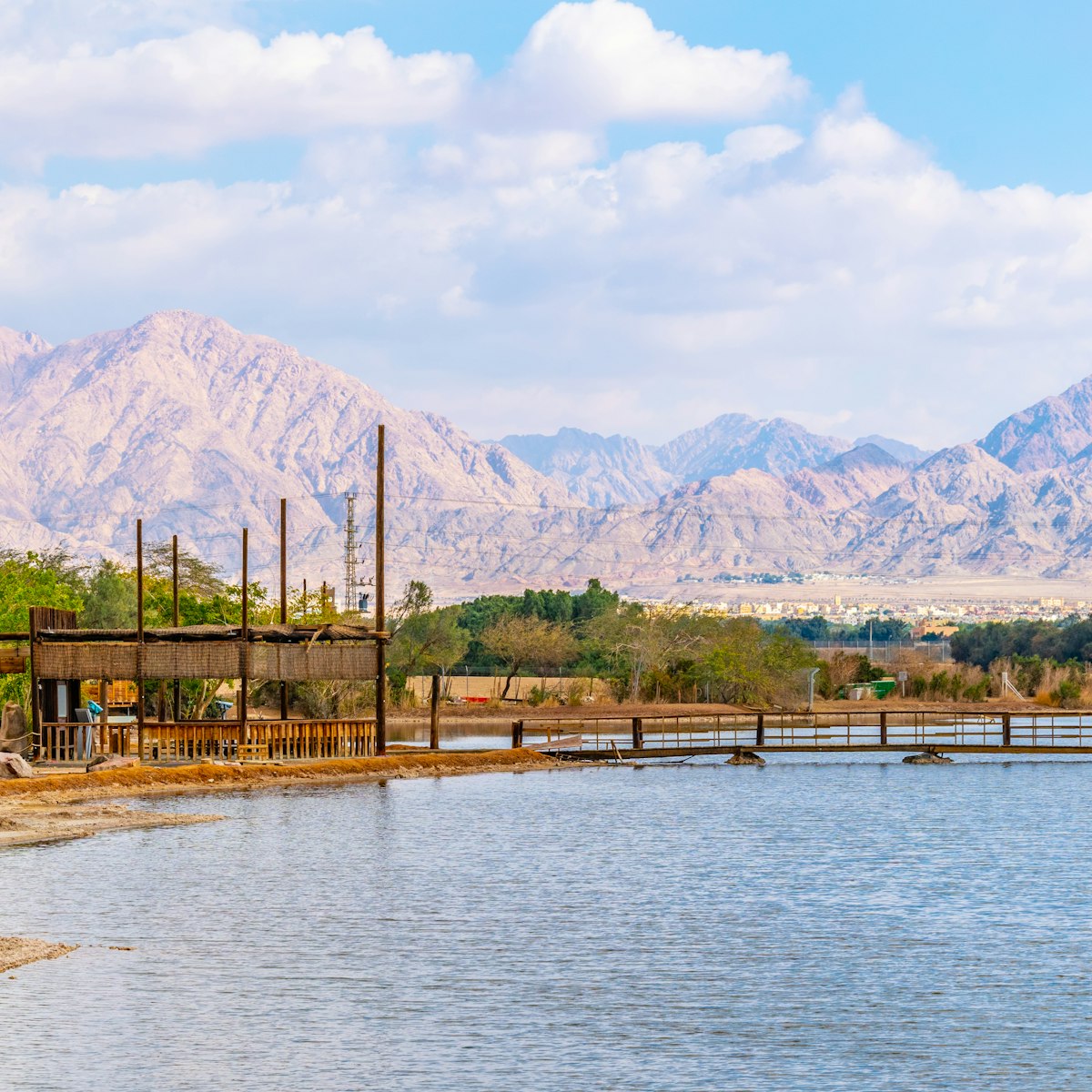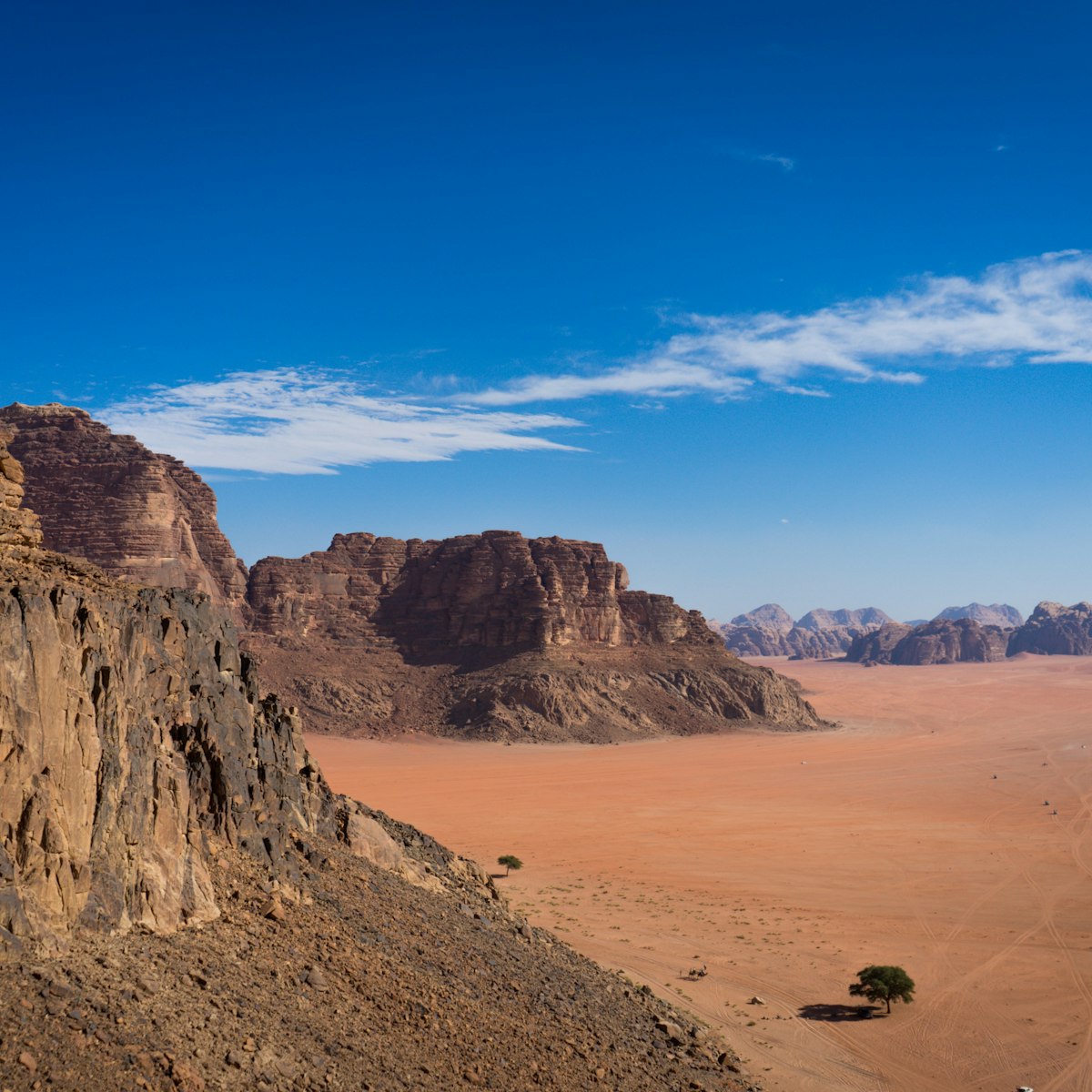Often mistaken for Lawrence’s Spring, the ‘Father of Aineh Spring’ is piped down the mountain into a large tank for Bedouin sheep, goats and camels. Look out for a large boulder near the tank: it is covered with Thamudic inscriptions, proving the spring has been used for a similar purpose for millennia. To reach Ain Abu Aineh, head south from the Rest House and follow the eastern side of Jebel Rum for 3km (a 1½-hour walk in soft sand).
The site in itself is not particularly special, but the views across to Jebel Khazali are wonderful, especially at sunset when the whole amphitheatre of stone and sand turns orange.






